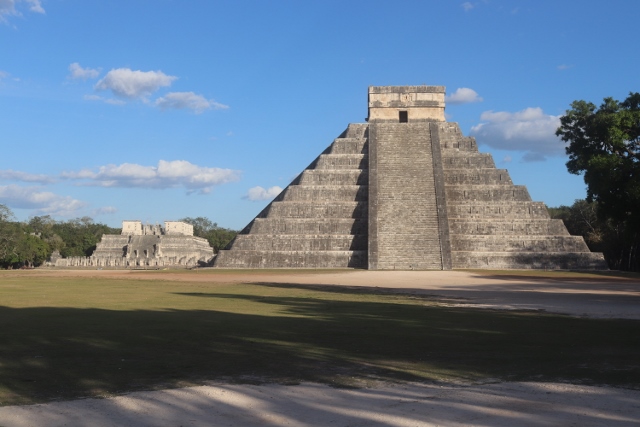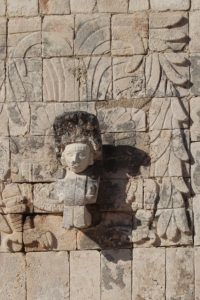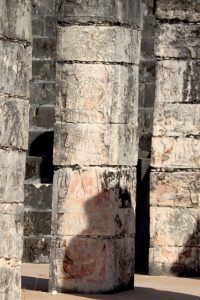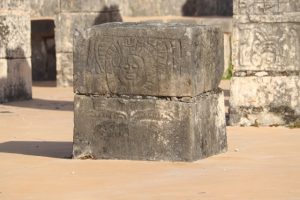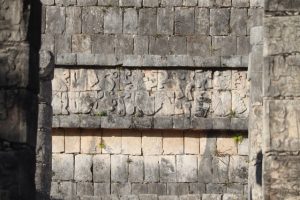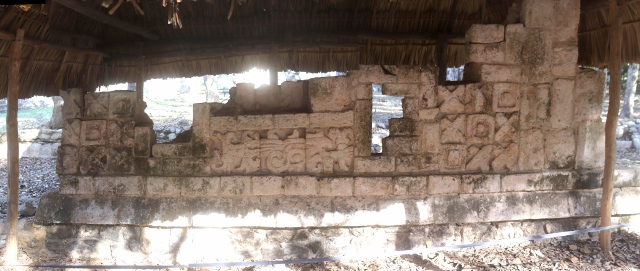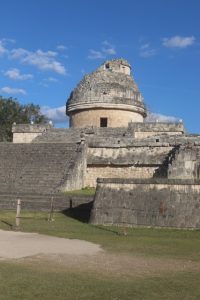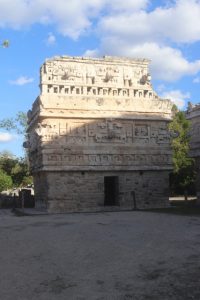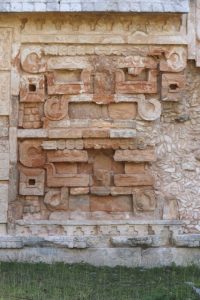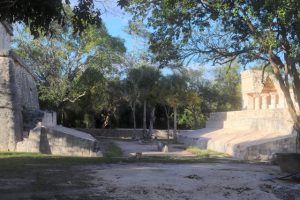For us tourist-avers travellers Chichen Itza is a nightmare. According to what we heard from other people, trying to beat the crowds is not an option: by eight in the morning there is already a substantial queue, and in any case, from the Yucatan Country Club we have a two-hour drive to get to the site. Yet, according to all those people we talked to, Chichen Itza is also a must on the Maya route. This was one of the biggest Mayan cities, certainly on the Yucatan peninsula, from when it started as humble village in the 6th C AD to its abandonment, the reasons of which are still not understood, in the 15th C. By then it had been transferred from a purely Mayan settlement into one significantly influenced by the Tolmecs, a people that came from the Mexican highlands. One of the effects of Toltec influence is the introduction of images of their God, Quetzalcoatl, called Kukulcan in Mayan language. The great pyramid, the dominant building also known as El Castillio, is referred to as the Pyramid of Kukulcan. It is in the older part of the city where one finds the images of Chaac, and his laughing nose, and the exuberant decorations that are so characteristic of the older Puuc style of building – hopefully we are going to see more of this later.
Anyhow, back to beating the tourists. A little known – and admittedly slightly risky – strategy that we applied successfully in Coba earlier, is to come late, say around 3 am, when the tour groups that have to get back to Cancun and the like are leaving again. And indeed, this worked brilliantly. We could drive and park, in the shade, all the way up to the entrance, where the queue had dissolved by now, we got our tickets immediately, and walked in without further delay. Against the flow, as most people were on their way out. Which allowed photos without too many people in front, and – as a bonus – with the brilliant late afternoon light in the back.
The downside? We should probably have left ourselves an extra half hour. As usual, we do take our time, which in the end meant that we did not get to see a few of buildings; the large ball court and nearby platforms had been closed by the time we arrived there, which is a pity, but you can’t win them all, I suppose.
In the mean time we had a fabulous visit to all the other structures of the site, from the impressive pyramid to the temple of the warriors, the 1000-columns square – with fabulously decorated individual columns -, the observatory and the older, decorated buildings called the Church and the Nunnery (names given by the Spanish, to be sure). Not to be missed, indeed – although we could have done without the hundreds of tourist souvenir stalls that have been allowed to operate inside the premises, something we have not yet encountered anywhere else.

